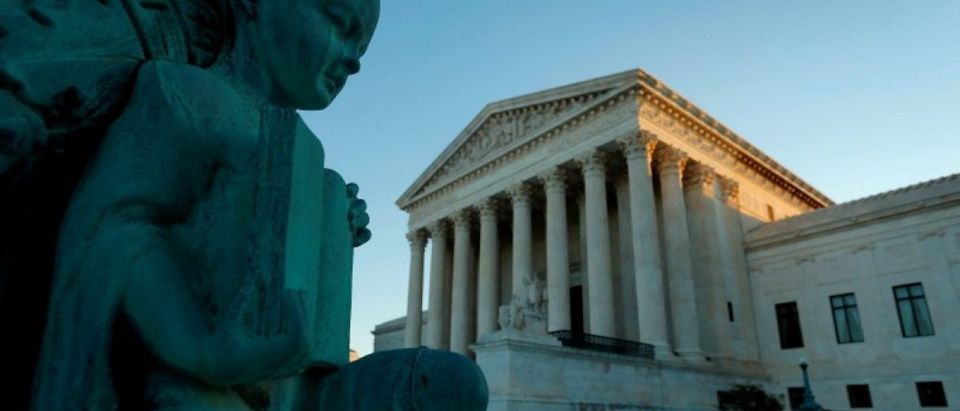The Supreme Court narrowed the scope of criminal asset forfeiture on Monday, finding that government officials cannot force individuals involved in a criminal conspiracy to forfeit proceeds they did not obtain.
Though the ruling only restricts one dimension of the modern forfeiture regime, the justices writings during this term suggest a growing hostility to current forfeiture practices.
Asset forfeiture allows law enforcement to seize property attained or used in the course of criminal activity. Critics charge that police routinely abuse this prerogative by requisitioning money and property unrelated to criminality without serious judicial oversight.
The case before the Court Monday, Honeycutt v. U.S., was occasioned when a Tennessee man named Terry Honeycutt was convicted of conspiracy to distribute iodine used for the production of methamphetamine. Terry’s brother, Tony Honeycutt, owned and operated a hardware store which sold Polar Pure, an iodine-based water purification product frequently used in the production of methamphetamine. Terry was a manager at Tony’s store. Despite warnings from police, the store sold large quantities of Polar Pure over a three year period, grossing almost half a million dollars.
Though Terry did not personally benefit from the sale of Polar Pure, the government hoped to seize nearly $70,000 in assets from him. Prosecutors, using a theory called joint and several liability, argued that Terry, as a co-conspirator, could be penalized for Tony’s profits.
Dan Alban, an Institute for Justice lawyer who frequently litigates asset forfeiture cases, told The Daily Caller News Foundation that the plain language of the law does not allow for this kind of penalty.
“He wasn’t the one who made the profit when the store sold this Polar Pure to people who were making methamphetamine,” Alban told TheDCNF. “He had not, in the language of the statute, ‘obtained, directly or indirectly,’ any proceeds from the violation of the law.”
By Alban’s count, nine circuit courts have weighed in on joint liability in the criminal forfeiture context, suggesting this particular practice is widespread, though no authoritative data is available on the subject. Eight courts — all but the U.S. Court of Appeals for the D.C. Circuit — sided with the government in the disputes.
In her unanimous opinion for the Court, Justice Sonia Sotomayor framed the issue using a short hypothetical:
Suppose a farmer masterminds a scheme to grow, harvest, and distribute marijuana on local college campuses. The mastermind recruits a college student to deliver packages and pays the student $300 each month from the distribution proceeds for his services. In one year, the mastermind earns $3 million. The student, meanwhile, earns $3,600. If joint and several liability applied, the student would face a forfeiture judgment for the entire amount of the conspiracy’s proceeds: $3 million. The student would be bound by that judgment even though he never personally acquired any proceeds beyond the $3,600.
She went on to explain that Terry could not be held liable for property his brother acquired, as the statute’s reach is limited by three factors which make the recovery of untainted property, or property not involved in a crime, impossible. These factors, she says, suggest the statute “does not countenance joint and several liability, which, by its nature, would require forfeiture of untainted property.”
The Court also concluded that the term “obtain” in the statute forecloses joint liability, as it restricts forfeitable property to property which is, in fact, possessed by the relevant party.
“Neither the dictionary definition nor the common usage of the word ‘obtain’ supports the conclusion that an individual ‘obtains’ property that was acquired by someone else,” Sotomayor wrote.
The ruling also notes there is a section of the federal forfeiture law that describes the limited circumstances under which untainted property may be seized. This suggests Congress contemplated adopting joint liability for criminal asset forfeiture, but decided against it.
The case marks the second time the justices have spoken on asset forfeiture this term. Justice Clarence Thomas wrote briefly about civil asset forfeiture in March, in a statement respecting the denial of cert in Leonard v. Texas. Though Thomas agreed with the Court’s decision not to hear the case for procedural reasons, he expressed concern that the Court relies on dubious historical practices to justify the current forfeiture regime.
“In the absence of this historical practice, the Constitution presumably would require the Court to align its distinct doctrine governing civil forfeiture with its doctrines governing other forms of punitive state action and property deprivation,” he wrote. “I am skeptical that this historical practice is capable of sustaining, as a constitutional matter, the contours of modern practice[.]”
Alban suggested that Sotomayor’s opinion in Honeycutt and Thomas’ statement in Leonard indicate a consensus hostility to modern forfeiture practices on the Court.
“When you couple [today’s ruling] with the fact that Justice Thomas is writing the opinion in Leonard…I think it signals that the Court is interested in this issue, that there is quiet a bit of agreement among the justices, and that the Court may be looking to reign in some of these abusive forfeiture practices, be they criminal or civil,” he told TheDCNF.
Send tips to kevin@dailycallernewsfoundation.org.
All content created by the Daily Caller News Foundation, an independent and nonpartisan newswire service, is available without charge to any legitimate news publisher that can provide a large audience. All republished articles must include our logo, our reporter’s byline and their DCNF affiliation. For any questions about our guidelines or partnering with us, please contact licensing@dailycallernewsfoundation.org.


